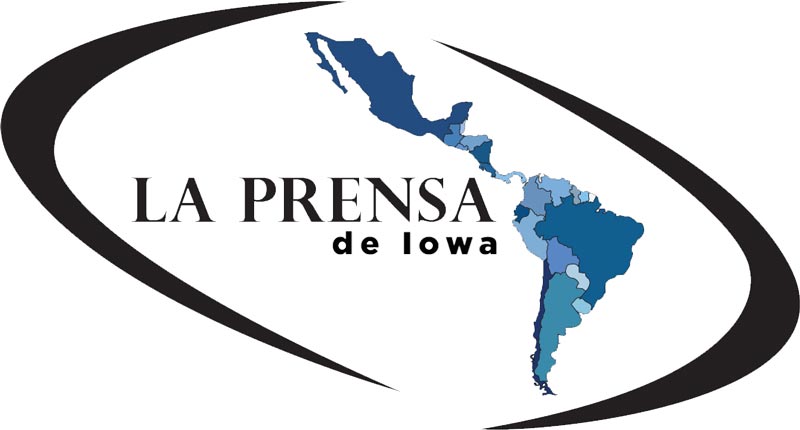Ayuda financiera para educación superior
/Escrito por Laurie Hempen.
Laurie Hempen. Miembro de la Junta de la Corporación de Liquidez de Préstamos Estudiantiles de Iowa
Redacción
LA PRENSA IOWA
Si un estudiante en su hogar está solicitando ayuda financiera para la universidad para el año 2023–2024, las ofertas de ayuda financiera deberían llegar pronto. Es posible que reciba un Plan financiero universitario estandarizado, que puede ayudar a su familia a comprender los diferentes tipos de ayuda que se ofrecen.
Utilice los siguientes consejos para entender las ofertas de ayuda financiera.
1. Comprenda exactamente qué constituye el costo de asistencia: Por lo general, verá enumerados los costos combinados o separados para la matrícula, las tarifas, el alojamiento, la comida y otros costos directos que cobra la universidad. Es posible que vea costos estimados de materiales, transporte, gastos personales y misceláneos que la institución no pagará. Para comparar ofertas de ayuda financiera de varias instituciones, alinee costos similares y calcule lo que deberá pagar por los gastos estimados, según cada programa y la ubicación de la institución.
2. Saber contar subvenciones y becas: Las subvenciones y becas no necesitan ser reembolsadas. Conozca qué subvenciones y becas son solo por un año, se renuevan automáticamente por varios años y cuáles requieren acción o calificación para recibir en años futuros.
3. Revisar el aporte familiar esperado: Cada institución determina una contribución familiar esperada a partir de la información reportada en la solicitud de FAFSA (Solicitud Gratuita de Ayuda Federal para Estudiantes) u otra solicitud de ayuda económica. Si bien esta cantidad puede revisarse en determinadas circunstancias, como un cambio drástico en los ingresos, generalmente se espera que su familia contribuya con la cantidad indicada para los gastos. Es posible que esto no se ajuste a las circunstancias de su familia, y la cantidad real que contribuya afectará el costo neto de asistir a la institución.
4. Considere cuidadosamente las opciones de trabajo: Las opciones de trabajo, como los programas federales de estudio y trabajo, requieren que el estudiante obtenga un trabajo calificado y trabaje una cierta cantidad de horas para ganar dinero, que se le pagará al estudiante y no a la universidad. Puede ser beneficioso para el estudiante seguir estas opciones y aplicar los aprendizajes a sus gastos. Alternativamente, un estudiante puede preferir encontrar otro empleo.
5. Conozca la diferencia entre los tipos de préstamos ofrecidos: Cuando las ganancias, los ahorros, las becas y las subvenciones no cubren el costo de asistencia esperado, la oferta de ayuda financiera incluye préstamos federales para estudiantes. Puede incluir préstamos federales para padres y préstamos institucionales o privados para estudiantes. Los préstamos federales para estudiantes son la mejor opción si su estudiante necesita pedir prestado. Revise cuidadosamente los términos y condiciones de otros préstamos para determinar cuál funciona para su familia o si prefiere pedir prestado a un prestamista que no figura en la lista.
6. Rechace los préstamos innecesarios: Una oferta de ayuda financiera puede incluir el máximo de préstamos federales para estudiantes y padres. Recuerde que cualquier préstamo deberá pagarse, con intereses, a lo largo del tiempo. Un estudiante puede rechazar un préstamo ofrecido o aceptar solo una cantidad de préstamo. Si los gastos pueden reducirse sin endeudarse, es una decisión inteligente rechazar algunos o todos los préstamos ofrecidos.
7. Explore las opciones de pago: El colegio o universidad puede ofrecer planes de pago u otras opciones de financiación. Tenga en cuenta los cargos por usar este tipo de plan y considere la flexibilidad que se obtiene al retrasar parte del pago de la factura.
Mientras revisa los términos de los préstamos educativos, considere las opciones para pagar el capital o los intereses mientras el estudiante todavía está en la escuela. Pagar los intereses a medida que se acumulan puede evitar la capitalización, donde los intereses no pagados se agregan al saldo del préstamo y comienzan a acumular intereses.
8. Cumplir con los plazos: Revise los plazos para aceptar la oferta de ayuda financiera o los componentes individuales, solicitar un plan de pago o realizar un pago. Asegúrese de que la información de contacto esté actualizada, para que usted o su estudiante reciban notificaciones sobre fechas límite o fechas de pago próximas.
9. Pida aclaraciones: Si tiene alguna pregunta sobre la oferta de ayuda financiera, comuníquese con la oficina de ayuda financiera de la universidad.
Para más información visite: www.IowaStudentLoan.org/Articles/Parents<http://www.IowaStudentLoan.org/Articles/Parents> to start.
Translation
Accepting College Financial Aid
By LAURIE HEMPEN
Iowa Student Loan Liquidity Corporation Board Member
Laurie Hempen. Iowa Student Loan Liquidity Corporation Board Member
If a student in your household applied for college financial aid for the 2023–2024-year, financial aid offers should arrive soon. You may receive a standardized College Financial Plan, which can help your family understand the different types of aid offered.
Use the tips below to make sense of financial aid offers.
1. Understand exactly what makes up the cost of attendance.
You will generally see combined or separated costs listed for tuition, fees, housing, meals and other direct costs charged by the college. You may see estimated costs for materials, transportation, personal and miscellaneous expenses that will not be paid to the institution. To compare financial aid offers from multiple institutions, line up similar costs and calculate what you will need to pay for expenses that are estimated, depending on each program and the institution’s location.
2. Know how to count grants and scholarships.
Grants and scholarships do not need to be repaid. Know which grants and scholarships are for one year only, which are automatically renewed for multiple years, and which require action or qualification to receive in future years.
3. Review the expected family contribution.
Each institution determines an expected family contribution from the information reported on the FAFSA (Free Application for Federal Student Aid) or other financial aid application. While this amount may be reviewed under certain circumstances, such as dramatically changed income, your family is generally expected to contribute the listed amount toward expenses. This may not fit your family’s circumstances, and the actual amount you contribute will affect the net cost to attend the institution.
4. Consider work options carefully.
Work options, like federal work-study programs, require the student to obtain a qualifying job and work a certain number of hours to earn the money, which will be paid to the student instead of the college. It may be to the student’s benefit to pursue these options and apply the earnings to their expenses. Alternatively, a student may prefer to find other employment.
5. Know the difference between the types of loans offered.
When earnings, savings, scholarships and grants don’t cover the total expected cost of attendance, the financial aid offer includes federal loans for students and may include federal loans for parents and institutional or private student loans. The federal student loans are the best option if your student will need to borrow. Carefully review terms and conditions of other loans to determine which work for your family or if you prefer to borrow from a lender not listed.
6. Decline unneeded loans.
A financial aid offer may include the maximum amount of federal student and parent loans available. Remember that any type of loan will need to be repaid, with interest, over time. A student may decline an offered loan or decide to accept only some of the loan amount. If expenses can be lowered without debt, it is a smart move to decline some or all of the offered loans.
7. Explore payment options.
The college or university may offer payment plans or other financing options. Be aware of any fees for using this type of plan and consider the flexibility gained by delaying part of a bill payment.
As you review the terms of education loans, also consider the options for paying principal or interest while the student is still in school. Paying interest as it accrues can prevent capitalization, where unpaid accrued interest is added to the loan’s balance and begins to also accrue interest.
8. Meet deadlines.
Review any deadlines to accept the financial aid offer or individual components, apply for a payment plan, or make payment. Be sure contact information is up to date so you or your student receives notifications about approaching deadlines or payment dates.
9. Ask for clarification.
If you have any questions about the financial aid offer, contact the college’s financial aid office.
For mor information visit the Articles tab on the Iowa Student Loan Liquidity Corporation website for additional college financing information. Go to www.IowaStudentLoan.org/Articles/Parents<http://www.IowaStudentLoan.org/Articles/Parents> to start.










































